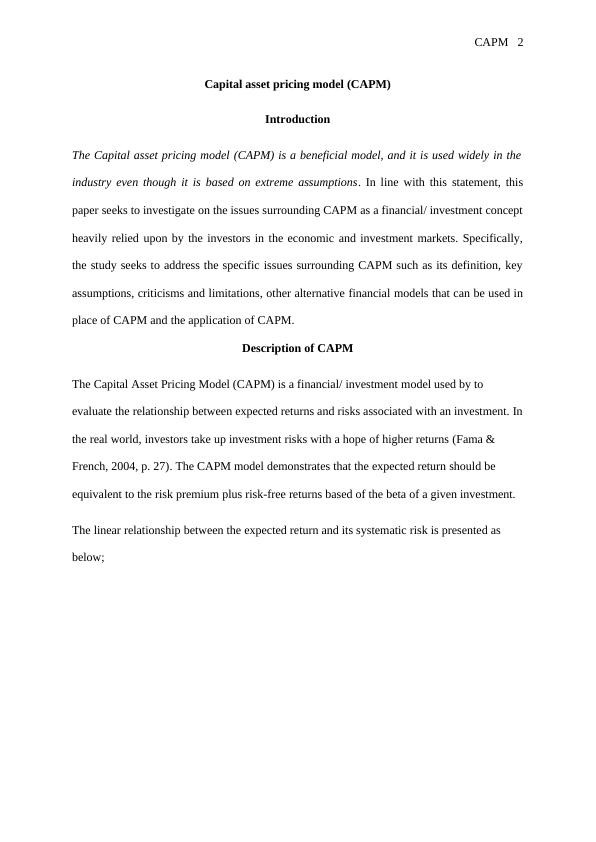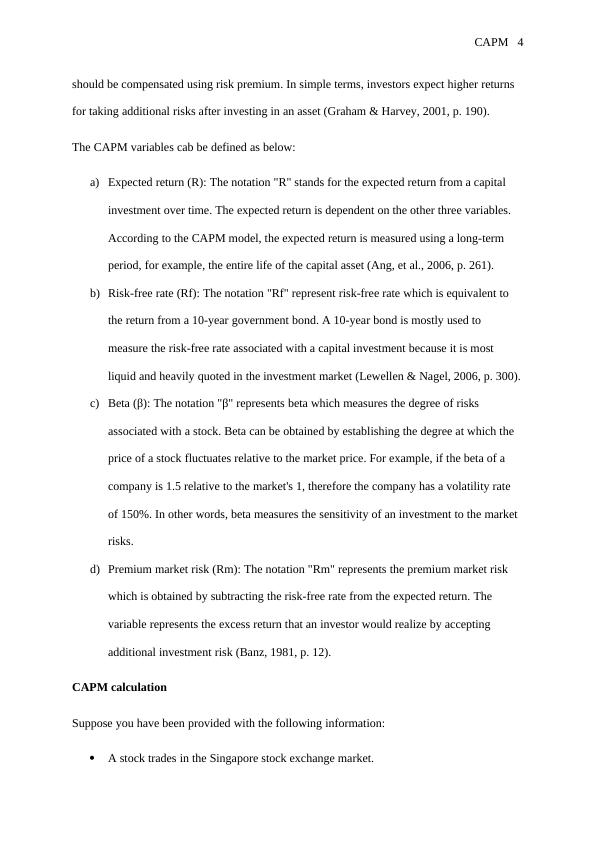Capital Asset Pricing Model (CAPM)
15 Pages3664 Words89 Views
Added on 2021-05-27
Capital Asset Pricing Model (CAPM)
Added on 2021-05-27
ShareRelated Documents
End of preview
Want to access all the pages? Upload your documents or become a member.
Capital Asset Pricing Model - Definition, Formula, Assumptions, and Extensions
|14
|3395
|171
CORPORATE FINANCE AND FINANCIAL MARKETS
|5
|813
|150
Capital Asset Pricing Model (CAPM): Theory, Assumptions, Limitations and Advantages
|9
|2680
|211
Capital Asset Pricing Model: Usefulness, Assumptions, and Limitations
|8
|2324
|135
Comparative Analysis of Security Market Line and Capital Market Line
|11
|2573
|269
Financial Theory & Analysis
|4
|954
|53




